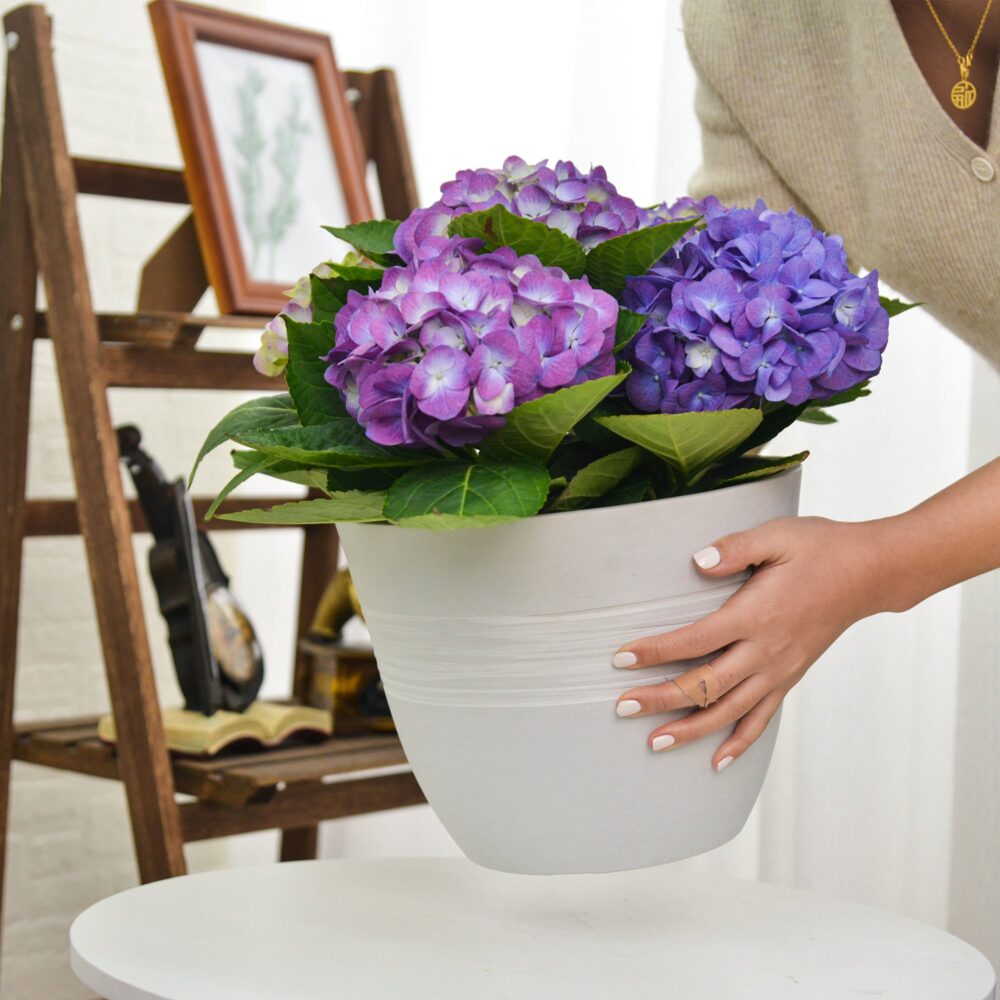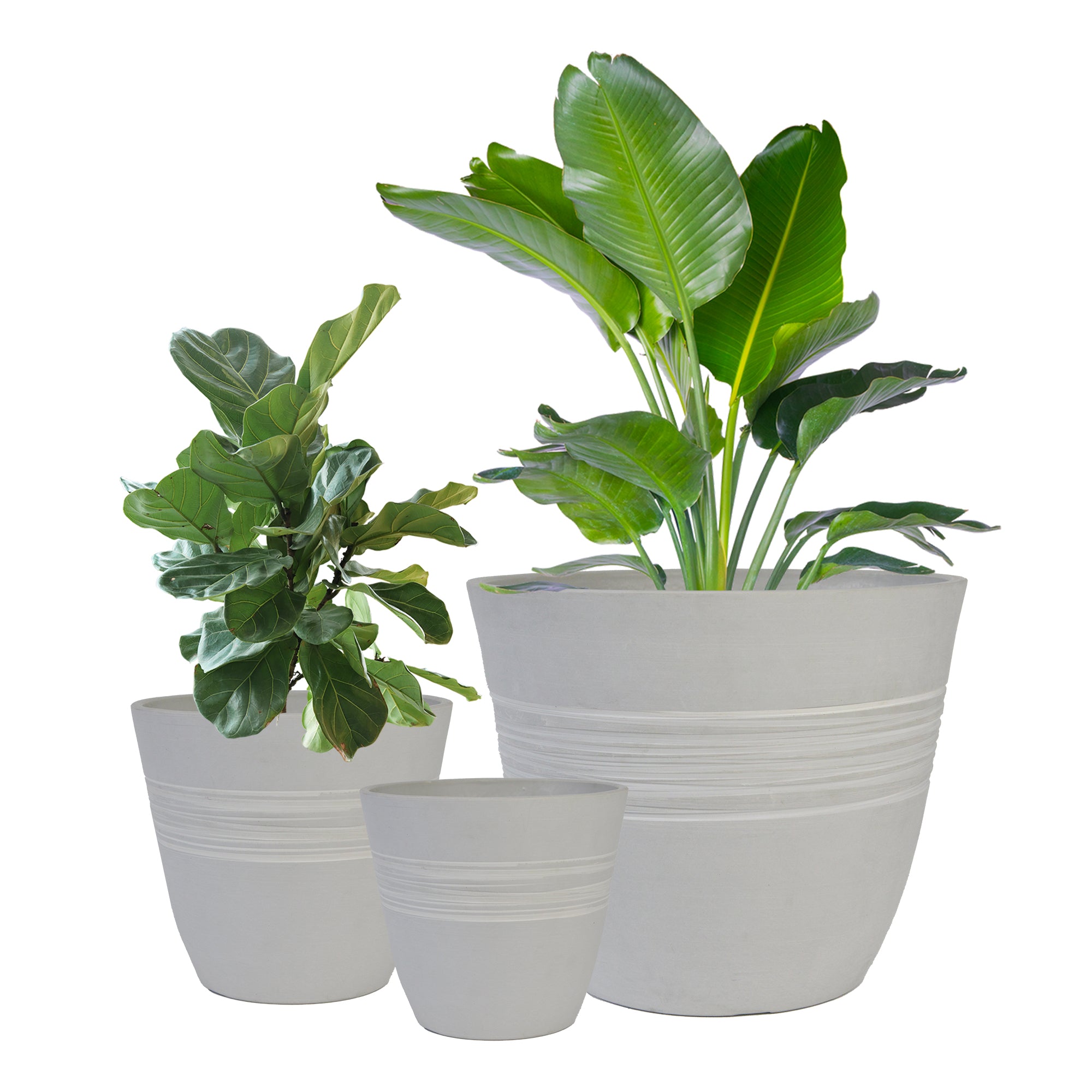How Do I Clean and Maintain Flower Pots to Extend Their Lifespan and Keep Them Looking Good? A Guide for Every Gardener
Flower pots are an essential part of gardening, providing homes for our beloved plants. Over time, however, they can accumulate dirt, mineral deposits, algae, and even plant diseases. Regular cleaning and proper maintenance not only keep your pots looking their best but also extend their lifespan and contribute to the health of your plants. Here’s a comprehensive guide on how to clean and maintain flower pots made from various materials.

Why Clean Your Flower Pots?
- Prevent Disease Spread: Old soil and buildup can harbor fungal spores and bacteria that can harm new plants.
- Improve Aesthetics: Clean pots simply look better and enhance the overall appearance of your garden or indoor plant display.
- Extend Pot Lifespan: Regular cleaning can prevent the degradation of pot materials, especially porous ones like terracotta.
- Ensure Proper Drainage: Mineral buildup can clog drainage holes, leading to waterlogged soil and root rot.
General Cleaning Steps for Most Flower Pot Materials:
- Empty the Pot: Remove all soil and plant debris from the pot. You can discard old potting mix or compost it if it was from healthy plants.
- Rinse Thoroughly: Rinse the inside and outside of the pot with a strong stream of water to remove loose dirt and debris. A garden hose works well for outdoor pots.
- Scrub Away Residue: Use a stiff brush (like an old dish brush or a dedicated pot brush) and soapy water to scrub away any remaining dirt, algae, or mineral deposits. For stubborn buildup, you can try a solution of equal parts white vinegar and water. Let it sit for about 30 minutes before scrubbing.
- Pay Attention to Drainage Holes: Ensure the drainage holes are clear of any blockages. You can use a small tool like a screwdriver or a stiff wire to poke through and remove any debris.
- Rinse Again: Rinse the pot thoroughly with clean water to remove all traces of soap or vinegar solution.
- Allow to Dry: Let the pots air dry completely before reusing or storing them. This helps prevent the growth of mold and mildew.
Material-Specific Cleaning and Maintenance Tips:
1. Terracotta and Clay Pots:
- These porous materials tend to absorb minerals and salts from the soil and water, often leading to white, chalky deposits.
- For stubborn mineral deposits, soak the pot in a solution of 1 part white vinegar to 10 parts water for several hours or even overnight. Then scrub as usual.
- You can also use a commercial clay pot cleaner.
- To help prevent mineral buildup, consider using rainwater or distilled water for your plants.
- Terracotta pots are susceptible to cracking in freezing temperatures. Store them indoors or in a sheltered location during winter.
2. Plastic Pots:
- Plastic pots are generally easy to clean. Soapy water and a brush usually do the trick.
- For algae stains, you can use a solution of 1 part bleach to 10 parts water. Be sure to rinse thoroughly and let the pot air dry completely in a well-ventilated area to remove all traces of bleach.
- Avoid using harsh abrasive cleaners on plastic, as they can scratch the surface.
- While generally durable, avoid leaving plastic pots in direct, intense sunlight for extended periods, as this can cause them to become brittle over time.
3. Ceramic and Glazed Pots:
- These are typically non-porous and easy to clean with soapy water and a sponge or brush.
- Stubborn stains can often be removed with a paste of baking soda and water. Apply the paste, let it sit for a while, then scrub and rinse.
- Be careful not to chip or crack glazed pots, as this can compromise their integrity.
4. Metal Pots:
- The cleaning method depends on the type of metal.
- For aluminum, soapy water is usually sufficient. Avoid using harsh chemicals that can react with the metal.
- For steel, especially if it’s not stainless, ensure it’s properly coated to prevent rust. Clean with soapy water and dry thoroughly. You may need to reapply a protective coating periodically.
- For copper, you can use commercial copper cleaners to maintain its shine or allow it to develop a natural patina.
5. Concrete and Stone Pots:
- These heavy-duty pots can be cleaned with a stiff brush and soapy water.
- For stubborn stains or algae growth, you can use a pressure washer on a low setting, but be cautious not to damage the material.
- Consider sealing concrete and stone pots to protect them from staining and water absorption, especially in regions with freezing temperatures.
General Maintenance Tips for All Flower Pots:
- Inspect Regularly: Check your pots for cracks, chips, or damage, especially before reusing them.
- Proper Storage: When not in use, store your clean, dry pots in a sheltered area to protect them from the elements. Stack them carefully to prevent breakage.
- Handle with Care: Be mindful when moving large or heavy pots to avoid dropping or damaging them.
- Consider Disinfection: If you suspect a plant in a pot had a disease, you can disinfect the pot after cleaning by soaking it in a solution of 1 part bleach to 10 parts water for 30 minutes, then rinsing thoroughly.

By following these simple cleaning and maintenance tips, you can significantly extend the lifespan of your flower pots, keep them looking their best, and create a healthier environment for your plants to thrive.
Planter for Indoor Outdoor Plants, Set of 2 Modern Decorative Plant Pots with Drainage Hole, Decorative Flower Pots
By greenship-seo|2025-01-14T12:26:44+00:00January 14, 2025|Categories: Hand-carving Series|Tags: Decorative Flower Pots|
k2-21G
By greenship|2024-08-13T06:17:26+00:00August 13, 2024|Categories: Hand-carving Series|
Plant Pots 6 inch 8 inch 12 inch for Indoor Outdoor Plants, Set of 3 Modern Decorative Planter with Drainage Hole, Decorative Flower Pots
By greenship-seo|2025-04-10T06:38:40+00:00January 16, 2025|Categories: Hand-carving Series|Tags: Decorative Flower Pots|
KC2-21G
By greenship|2024-08-13T06:19:08+00:00August 13, 2024|Categories: Hand-carving Series|
Modern Plant Pots丨Planter for Indoor Plants,8 inch or 10 inch Plant Pots with Drainage Hole,Decorative Flower Pots
By greenship-seo|2025-04-10T08:32:55+00:00January 7, 2025|Categories: Hand-carving Series|Tags: Decorative Flower Pots, Self-Watering Pots|
20VD
By greenship|2024-08-13T06:43:41+00:00August 13, 2024|Categories: Hand-carving Series|






